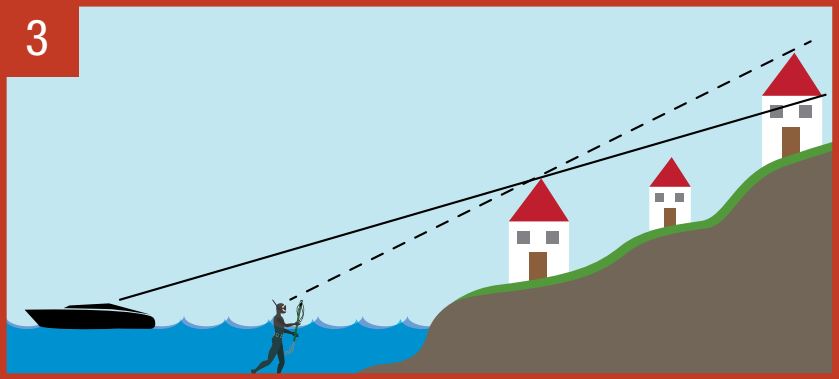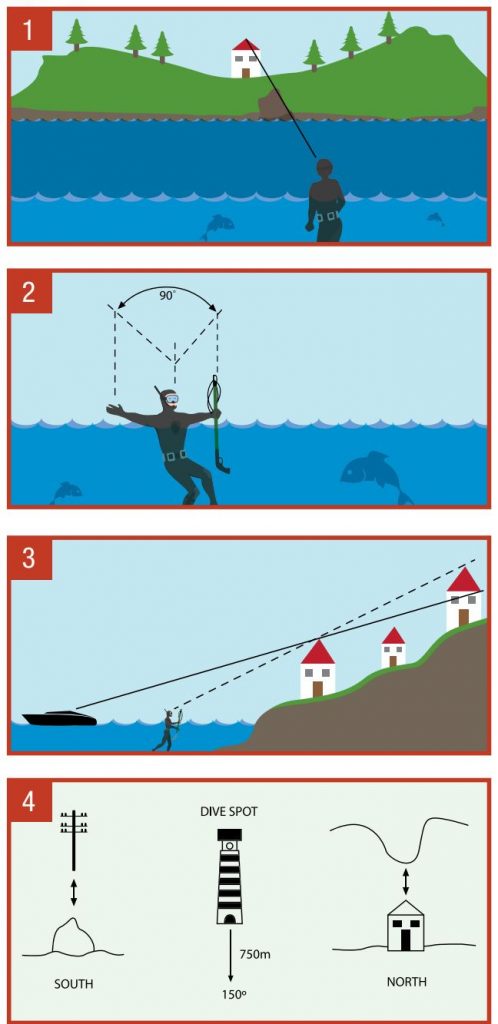
Much of the time, spearfishing is all about location. Sometimes, the difference between a productive dive and and an unproductive one is not a question of “how?”, but rather, “where?”. Growing up, I would often see experienced divers coming out of the water with far better fish than I did, even though we were diving in the same area. I thought these guys must just be amazingly skilled divers. I have learnt, however, that all the skill in the world will not help if you are not diving on the right spots that hold fish. Not knowing your location can put you at a huge disadvantage.
This is why guys with local knowledge will often out-dive spearos who are visiting an area. It’s often that specific small crack, or knowing to find certain indicator fish on a section of reef, that will make all the difference. If you dive an area a lot, you will eventually have the reef mapped out, and you learn where the fish hold up. Over time, you learn where certain fish are more likely to come through.
Landing on these hot spots is critical to effective spearfishing. When you are on a boat, GPS and sounders do most of that work for you. But when you are shore diving what do you do? At this stage there are no waterproof GPS units, and finding the hot spot is often easier said than done.
This is where knowing how to use landmarks is critical to finding your way around a reef. The key is to find adequate land references. The better the landmark, the more accurate you will be. Good landmarks are those that are permanent and are visible at all times of the day. Bushes and temporary structures like fences can be moved or cut down, and this will cause confusion. Permanent structures like buildings and rocks are the best.
The trick is to find a prominent feature on the shore line and match it up with something in the distance. For example a rocky outcrop on the shore line that lines up with a house on top of a hill. Test your landmark by swimming left to right and notice how much movement there is between them. Marks that are accurate will have a greater relative movement between the two objects.
This will give you one point or line of reference, which will enable you to find out how far up or down on the reef you are, but won’t help you work out how far out to sea you need to be. For this you will need another set of landmarks that will give you a cross reference. The best is to have another landmark at least 90 degrees to the first one. The best marks are ones that are furthest from each other. In other words if you are looking at the shoreline, one set of land marks will be on the far left and the other set on the far right.
If you can’t find a second reference, try and find two structures that you can line up like the sights on a rifle, This will help you to determine the correct distance out to sea. These two structures need to be one in front of the other and you need to remember where the front one intersects the one behind. This type of landmark is difficult to get right. I prefer to use my dive watch and depth to work out how far out to sea or where I am on a reef. This does mean that you will need to do a couple of dives to the bottom to get a depth reading, and sometimes on days with bad vis it’s tricky to get on the spot.
When boat diving, it’s easy to get lazy and rely on GPS technology. But what happens when your GPS packs up? If you have good landmarks you will always be able to figure out where you are. The better you become at taking landmarks, the more efficient you will be in the water, reducing the time between spots and helping you land exactly where you want to be.
So, the next time you land on a good spot, lift your head out of the water and take some marks. Then make a point of revisiting the area and using the marks to find the spot again. I find that only once I have gone back a second time that the landmarks ‘sink in’ and I remember them properly.
P.S. Sometimes it’s a whole lot easier asking a mate who has been diving the area for a while what his marks are. (That’s if he’s willing to share. Landmarks can be closely guarded secrets.) They will be tried and tested and probably the easiest to remember.

Picture Reference:
- A good bearing uses prominent landmarks that are far apart.
- The best bearings are 90 degrees apart.
- A gun-sight type bearing: How far out to sea you are determines how much of the top house’s roof is visible.
- A sample bearing complete with a general location bearing – 750m straight out from the lighthouse at 150o.
South, the point of the wash rock lines up with the telephone pole. North, the point of the house lines up with a prominent dip in the hill behind.
